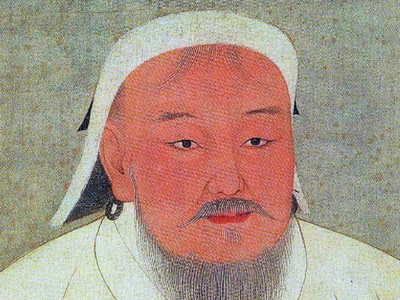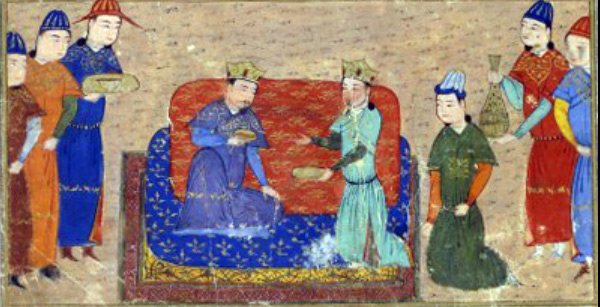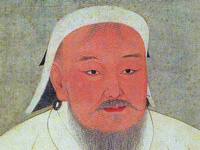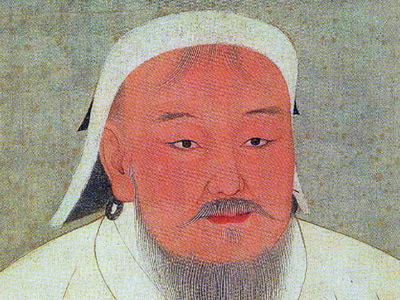Genghis Khan (1162-1227)

Rift with Toghrul
Senggum, son of Toghrul (Wang Khan), envied Temüjin's growing power and affinity with his father. He allegedly planned to assassinate Temüjin. Although Toghrul was allegedly saved on multiple occasions by Temüjin, he gave in to his son and became uncooperative with Temüjin. Temüjin learned of Senggum's intentions and eventually defeated him and his loyalists.
One of the later ruptures between Temüjin and Toghrul was Toghrul's refusal to give his daughter in marriage to Jochi, Temüjin's first son. This was disrespectful in Mongolian culture and led to a war. Toghrul allied with Jamukha, who already opposed Temüjin's forces. However, the dispute between Toghrul and Jamukha, plus the desertion of a number of their allies to Temüjin, led to Toghrul's defeat. Jamukha escaped during the conflict. This defeat was a catalyst for the fall and eventual dissolution of the Keraite tribe.

Genghis Khan and Toghrul Khan, illustration from a 15th-century Jami' al-tawarikh manuscript
The next direct threat to Temüjin was the Naimans (Naiman Mongols), with whom Jamukha and his followers took refuge. The Naimans did not surrender, although enough sectors again voluntarily sided with Temüjin. In 1201, a khuruldai elected Jamukha as Gür Khan, "universal ruler", a title used by the rulers of the Qara Khitai. Jamukha's assumption of this title was the final breach with Temüjin, and Jamukha formed a coalition of tribes to oppose him. Before the conflict, several generals abandoned Jamukha, including Subutai, Jelme's well-known younger brother. After several battles, Jamukha was turned over to Temüjin by his own men in 1206.
According to the Secret History, Temüjin again offered his friendship to Jamukha. Temüjin had killed the men who betrayed Jamukha, stating that he did not want disloyal men in his army. Jamukha refused the offer, saying that there can only be one sun in the sky, and he asked for a noble death. The custom was to die without spilling blood, specifically by having one's back broken. Jamukha requested this form of death, although he was known to have boiled his opponents' generals alive.
HISTORY

RESOURCES
This article uses material from the Wikipedia article "Genghis Khan (1162-1227)", which is released under the Creative Commons Attribution-Share-Alike License 3.0.
© Stories Preschool. All Rights Reserved.









